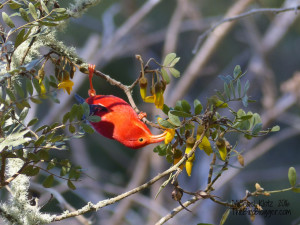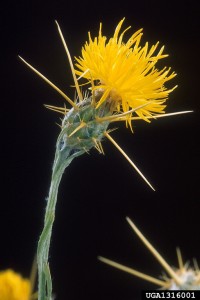photo from www.TheBirdBlogger.com; used with permission
Evidence is growing that invasive species are among THE major threats to conservation goals worldwide.
In 2015 the IUCN called invasive species the second most significant threat to those World Heritage sites around the world that have outstanding natural values. (Poaching is the greatest threat.) My October 21, 2015 blog showed that the IUCN report actually underestimated the impact of invasive species. I listed briefly the principal invaders in several U.S. National parks. Earlier blogs criticized the National Park Service for failing to regulate the movement of firewood (August 2015) and described the invasive threat to Hawai`i (earlier in October 2015).
Now a second study shows invasive species are a principal driver of species extinction. The authors assessed the prevalence of alien species as a driver of extinctions among plants, amphibians, reptiles, birds, and mammals (which are the best-studied taxa) post-1500 AD. Overall, 58% of extinct or extinct-in-the-wild species had been driven to extinction at least in part by invasive species. Invasive alien species are the second most common threat overall. Indeed, invasive species are the most common threat for vertebrate extinctions (62% of extinct or extinct-in-the-wild species faced threats from invasive species). Invasive species ranked fourth as a cause of extinction for plants: 27% of listed plant species were threatened by invasive species.
For those species with just a single driver of extinction, invasive species is the cause for 47% of mammals, 27% of birds, 25% of reptiles, and 17% of plants. In no case were invasive species identified as the sole threat to an amphibian species – although invasive species are their second highest threat.
Although the paper lists invasive species as second, their threat was virtually identical to that of “overexploitation”, the threat ranked first. That is, 124 out of 215 species studied were threatened at least in part by invasive species; 125 were threatened by overexploitation.
Other principal threats were overexploitation, agriculture, aquaculture, and – in the case of plants – residential and commercial development. Categories related to habitat loss ranked surprisingly low. Only 61 of the 215 cases listed agriculture and aquaculture as threats.
The authors reflect on whether invasive species are not themselves causal agents of extinction, but rather symptoms of the real causes, especially habitat destruction. They conclude that that is unlikely.
Instead, they suggest that invasive species impacts might often be underestimated, as many interactions – especially those between alien parasites and native hosts – are very hard to detect.
Not surprisingly, 86% of island endemic species had invasive species as one extinction driver. Nevertheless, continental organisms are also threatened — 14% of alien-related extinctions have been of species with mainland populations. These include eight amphibians, five birds, and six mammals. Most of these invader-threatened mainland organisms are from the Americas
Among the approximately 30 alien taxa named as extinction drivers are rats, cats, and trout as threats to other vertebrates such as birds and mammals. All three were also ranked highly as damaging invasives in the earlier IUCN report on World Heritage sites. Diseases – especially chytridiomycosis and avian malaria – were causal agents of extinction for amphibians and birds. Several herbivores – especially goats, sheep, and European rabbits – and alien plants were drivers of extinction for plant species.
Of course, outright extinction is not the only damage to biological diversity caused by invasive species. American chestnut, Fraser fir, and redbay are not extinct, but their ecological role has been virtually eliminated as the vast majority of these forest trees die off. Other tree taxa are on same road – ash and eastern hemlocks across wide expanses of their ranges; tanoaks; whitebark pines …
Invasive species pose major threats to biological diversity and other conservation goals. These damages are on top of the acknowledged threat of invasive species to agriculture, forestry, or economic groups. (See, for example, Lovett et al. 2016 discussed in my previous blog.) The role of invasive species in extinction described in this new paper suggest a long-standing bias among conservationists’ priorities. Too often, we have focused on species threatened by overexploitation – which is such easier to see and involves an obvious “villain”.
Nevertheless, a host of practical suggestions have been put forward to address the root causes of species introductions and spread. Often, these ask some or many of us to stop doing what we have been doing. But much meaningful conservation action requires someone to accept limits or to make sacrifices.
Will the conservation community – including grant-making foundations, federal and state agencies, and the many conservation non-governmental organizations ranging from the IUCN to local groups – now take up the challenge of implementing suggested actions and actively advocating for the funding needed for practical steps that will begin to bring this threat under control?
Sources
Bellard C, Cassey P, Blackburn TM. 2016 Alien species as a driver of recent extinctions. Biol. Lett. 12: 20150623. http://dx.doi.org/10.1098/rsbl.2015.0623 http://rsbl.royalsocietypublishing.org /
Lovett,G.M., M. Weiss, A.M. Liebhold, T.P. Holmes, B. Leung, K.F. Lambert, D.A. Orwig , F.T. Campbell , J. Rosenthal, D.G. McCullough, R. Wildova, M.P. Ayres, C.D. Canham, D.R. Foster, S.L. LaDeau, and T. Weldy. 2016. Nonnative forest insects and pathogens in the United States: Impacts and policy options. Ecological Applications, 0(0), 2016, pp. 1–19. DOI 10.1890/15-1176.1
Available at www.caryinstitute.org/tree-smart-trade
Posted by Faith Campbell



